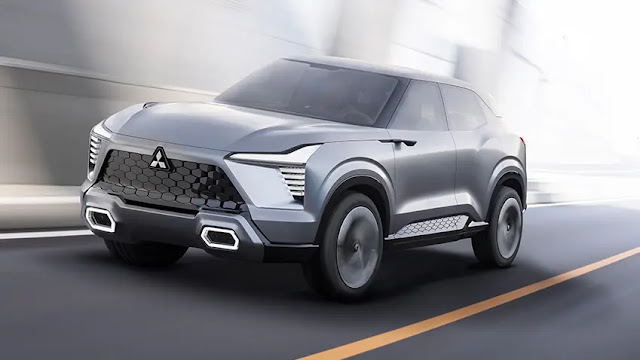2019 Mitsubishi Triton pushes upmarket
Upgraded pick-up also pushes up prices, fuel consumption and weight, while payload drops
And that’s not all that’s on the rise as the bluffly-styled new Mitsubishi Triton 2019 is up in weight and fuel consumption.
Mitsubishi says a big hike in equipment, especially driver assist systems, justifies the big price increase for the GLS Premium.
However, the 2019 Triton remains far cheaper than the flagship models of the only two one-tonne utes that outsell it in Australia, the Toyota HiLux Rugged X and Rogue and the Ford Ranger Wildtrak (yes, the Raptor is more expensive but would anyone cross-shop that against a Triton?).
“You saw the price rises are not that large. We are still going to be the best value for money.”
No other Triton in the 20-model range increases in price as much as the GLS Premium.
At the opposite end of the spectrum pricing of the GLX petrol and diesel 4×2 and 4×4 single-cab models remain unchanged, which gives you an idea of where most of the new equipment has been allocated.
The full range with pricing changes (or not) is listed at the bottom of this story. The Blackline has been dropped.
The upgraded Triton launches with a seven-year/150,000km warranty offer until June 30, 2019, adding two years to the standard cover from Group 1 Cars. Four-year roadside assist and three-year capped price servicing are also part of the deal.
Principe said the warranty extension would be used to gauge customer interest in making such a move permanent.
“Utes take a battering and people worry about warranty and that sort of things, so we are seeing if we can overcome some of those concerns with utes in general.”
Our man Phil Lord went through all the significant MR Triton styling, equipment and engineering changes at the international launch in Thailand.
He sampled it in a first drive and got his handsome mug in front of the camera to put you right in the picture.
So here we’ll focus on which models in the range get what new and upgraded features.
Commendably, autonomous emergency braking (or Forward Collison Mitigation as Mitsubishi dubs it) is standard on all models except the GLX. However, the Triton hasn’t made the transition to rear disc brakes as some utes now have.
That makes the Triton 4×2 dual cab auto diesel the cheapest ute on the market with AEB, until the new SsangYong Musso updates.
The GLX only gets rear parking sensors and then only on the pick-up, not the cab chassis. Mitsubishi has introduced a GLX ADAS model to target fleets that include the rear sensors and adds AEB and lane departure warning. GLX+ gets the same DAS specification.
GLS adds auto high-beam, blind-spot warning, lane change assist, rear cross-traffic alert, front parking sensors and a miss-acceleration system (auto only) that helps you avoid inadvertent low-speed collisions. GLS Premium alone gets a 360-degree camera. All that new gear helps explains why the two GLS models get the biggest prices rises.
All Tritons also get hill start assist, traction and stability control, trailer stability assist a reversing camera and seven airbags.
Under the current ANCAP structure, all Triton models are eligible for five star testing except the GLX. It’s a moot point though, as Mitsubishi does not intend to retest and will continue to advertise the Triton as five stars, usually (but not always) adding the 2015 date stamp in its promotional material.
Other equipment upgrades for Triton include daytime running lamps for GLX 4×4 dual-cab; an electrochromic mirror, front foglights, dusk-sensing headlights, rain-sensing wipers, a four-spoke steering wheel and a high-contrasting meter for GLX+ 4×4 dual-cab.
On top of that, the GLS adds LED headlights and tail-lights, hill descent control, 18-inch alloys, a high contrast meter, an air circulator mounted in the rear roof and two rear-seat USB power outlets. The GLS Premium alone gets a nudge bar and under-rail tub liner. Bluetooth streaming continues on all models while Apple CarPlay and Android Auto are offered from GLX+ up.
The Triton ranges gets a revised leaf spring rear suspension tune that splits the heavy-duty work truck GLX and GLX+ from the two standards GLS sports trucks. There are also two 4×4 systems, with the GLS and GLS Premium’s Super Select II adding a new off-road selector that alters driveline characteristics for surfaces such as gravel and mud.
The entire range steps-up from a five- to six-speed automatic combined with a newly revised diff ratio. The six-speed manual continues on. Mitsubishi says it opted for a six-ratio auto rather than eight-speed to save weight.
It was fighting a losing battle anyway as the top-weight Triton climbs about 65kg to an even 2000kg. Maximum payload drops from 965kg to 906kg, while towing capacity remains unchanged at 3100kg, with a max towbar load of 310kg.
Extra weight also contributes to a higher fuel consumption rate for the carry-over 133kW/430Nm 2.4-liter turbo-diesel engine. It is now claimed to be as low as 7.9L/100km and as high as 8.6L1/00km. The MR Triton claimed between 7.2L/100km and 7.6L/100km.
Just for comparison’s sake, the top-selling HiLux SR5 dual-cab turbo-diesel auto averages 8.4L/100km, weighs in at 2045kg, has a 925kg payload and 3500kg braked towing capacity as a manual and 3200kg as an auto.
T2.4-litertre petrol four-cylinder available with the 4×2 GLX is unchanged and mates only with a five-speed manual transmission.
Article source: https://www.motoring.com.au/mitsubishi-triton-pushes-upmarket-116139/



Comments
Post a Comment